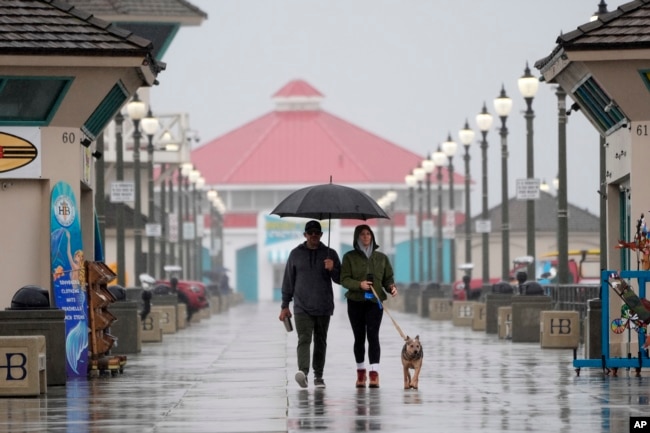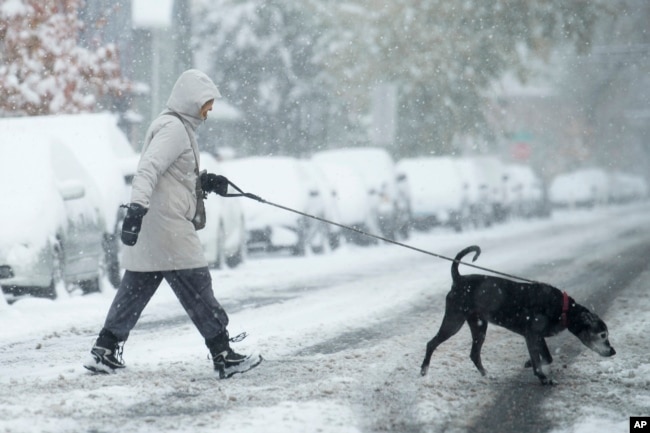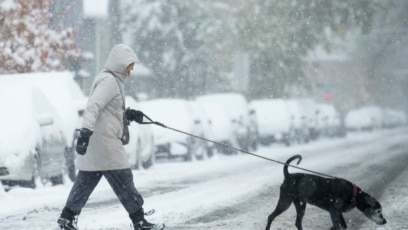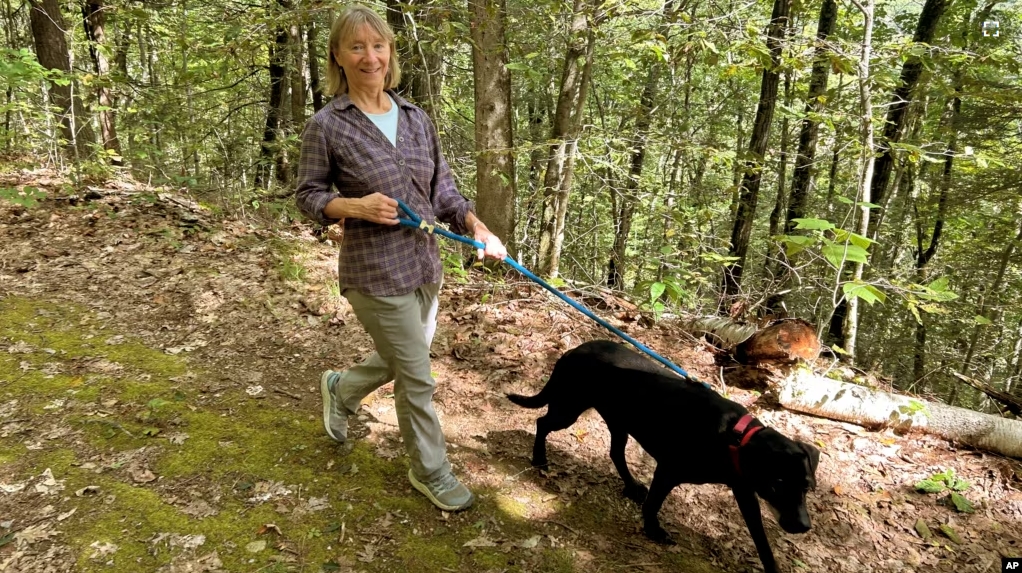Over the past 20 years, injuries related to dog walking have been on the rise among adults and children in the U.S., Johns Hopkins University researchers say.
The most common kinds of injuries include broken bones, sprains and head trauma.
From 2001 to 2020, the estimated number of adults treated for dog-walking injuries at emergency departments increased from 7,300 to 32,300 a year. That comes from lead researcher Ridge Maxson who spoke to the Associated Press.
Of those patients, 75 percent were women. Forty-seven percent were adults between ages 40 and 64.
But that information is only for visits to emergency rooms. Maxson said many people might seek treatment at other healthcare centers for their injuries, including at primary care, specialty or urgent care clinics.
He noted that dog ownership has become increasingly common in the United States with about half of households having at least one dog.

How to protect yourself
Safe dog walking involves careful attention and, in some cases, special equipment. That can be especially true in bad weather conditions.
However, multitasking — doing several tasks at once — can be dangerous. That includes using your mobile phone while doing something else.
“You can’t really afford to relax when you walk a powerfully built dog…You have to pay attention,” said Noel Holston, a dog owner in Athens, Georgia.
In the early 2000s, Holston was walking his 30-kilogram dog in a park near his home when a large bird made a noise. His dog did what dogs often do and ran after the bird. That pulled Holston off the sidewalk.
“I stepped into a hole and heard my left ankle snap. The pain was so intense. I almost passed out,” said Holston who is now 76 years old.
Running with a leashed dog is another risk no matter how well trained you think your dog is. The activity is especially dangerous with a dog that is easily surprised or very young. That is what happened to Robert Godosky in New York City.
“My dog…was relatively new to us. He got spooked and got in front of me, and I went flying over the dog…I ended up breaking two ribs,” he said.
There are other dangers in rural areas, said Steven Haywood, an emergency room doctor in Corinth, Mississippi.
“Getting struck by vehicles,” he said. “That’s definitely the most life-threatening injury when people are walking their dogs.”
Areas like his have many roads without sidewalks or wide shoulders. That is especially dangerous when people wear dark clothes with no reflectors or lights and their animal also does not have such protection.
In addition to lights and reflectors, there are other things that can minimize dog-walking risks.
During snowy or icy weather, wear shoes with good treads. Consider wearing shoes with spikes or studs.
Maxson suggests using a non-retractable leash of 1.8 to 2.4 meters. “Longer leashes are more likely to get tangled around your legs and cause falls. Retractable leashes can sometimes make your dog more difficult to control.”
They can cause burns when held too close to the body, if they lengthen or retract too quickly.
In San Francisco, dog trainer Shoshi Parks recommends a no-pull harness with a leash clipped to a dog’s chest rather than their back. It gives the walker more control and puts less strain on the dog.
Parks suggests holding a leash at your center of gravity, near your torso, hip or thigh. Put your hand through the loop of a leash and hold it a little lower down.
She calls retractable leashes “no go,” meaning you should not use them. They can cause burns when held too close to the body if they lengthen or retract too quickly.

Other ways to protect yourself
For people with problems balancing or moving around, experts suggest seeking help walking a dog, especially in bad weather. Helpers could include a neighbor, an older child or a professional dog walker.
Haywood and Maxson agreed that balance and strength-training exercises, especially for older adults, can help decrease the risk of falls and broken bones.
And they said working with a dog trainer helps not only the dog but the walker, who can learn to read their dog’s body language better.
“Even young, healthy, strong people may have difficulty controlling larger breeds that aren’t used to walking on a leash. Any exercise to give strength, give balance, is going to help,” Haywood said. “Make sure you can control the dog that you’re walking.”
I’m Ashley Thompson.
And I’m John Russell.
Leanne Italie reported on this story for the Associated Press. John Russell adapted it for VOA Learning English.
Quiz- Ways to Protect Yourself from Injures while Walking Your Dog

Start the Quiz to find out
__________________________________________
Words in This Story
sprain –n. an injury to the tissue that connects bones at joints like the knees, wrists, elbows or ankles
trauma –n. damage to tissue from force or a blow
clinic –n. a center that provides health care but is not as large as a hospital
relax – v. to make less tense or rigid; to make less severe or stringent
get spooked – v. (phrasal) to become scared or frightened from something seen or heard
tread – n. the part of a shoe or boot sole that touches the ground
retract – v. to draw back or in
